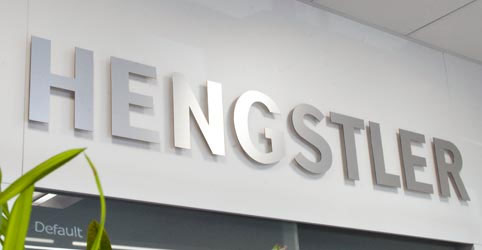
For specialized applications, additional features may be required for successful printing such as barcode scanning during or after printing, printing on both sides, etc. Here we review some of the common not so common features.
A dual-feed unit is a specific device that is added to the paper feed side of a printer. The dual-feed allows two paper rolls or fanfold stacks to be fed into it, then the dual-feed unit selects (under command of the print controller) which roll should be used. Advantages of using the dual-feed unit include the ability to double the paper supply and therefore the time between changing paper rolls by using the automatic changeover feature, and the ability to select, via the printer interface, between two different types of paper. One typical use for the second capability is to use thicker stock to print tickets, and then switch to a standard paper stock to print a receipt. The same principal applies for triple and multi-feed units.
A chute/jam sensor continually monitors whether there is paper in the chute and can be read via the Status function. This function is often used in conjunction with the host’s peripherals to signal the application when a printout is not taken. Additionally, the chute/jam sensor is monitored while first printing after a cut. After a cut, the printer “knows” where the end of the paper is. As printing takes place, the printer also “knows” how many paper advance steps have been made, and approximately when the leading paper edge should reach the chute/jam sensor. If the paper does not reach the sensor when expected, the printer assumes that a paper jam has taken place and signals this fact via the Status command. Note: Care must be taken when mounting the printer to ensure that the sensor is not exposed to direct sunlight. The multiple wavelengths of sunlight can cause false readings from this sensor. Therefore, always shield the chute and sensor from direct sunlight using chutes, shrouds, covers and similar techniques.

When ordered with the Paper Pre-End Sensor option, the printer comes with a paper pre-end sensor to be mounted by the customer. The sensor is a reflective type. The sensor is equipped with a long enough cable to allow flexible mounting by the customer, and the sensor itself is mounted on a small printed circuit board with a hole to be used for mounting it. Simply mount the sensor where it will detect paper low (it is typically mounted facing the side of the paper roll at a distance of 2..5 mm, so that as the diameter of the paper roll decreases, it eventually loses the reflection of the light and changes state). If a paper roll holder and Paper Pre-End (Paper Low) Sensor were both ordered, the PPE sensor will be mounted to the paper roll holder, and the sensor connector need only be plugged into the printer controller board, (if necessary). The status of this sensor will be reported when the printer status is requested via the interface.
Some printers can be supplied with an optional barcode scanning feature. The purpose of this option is to scan preprinted barcodes on the non-coated (back) side of the printout. The scanned barcodes are stored in the printer memory and can be read out via query commands. Note: If the particular printer model is equipped with the barcode scanner option, the RS-232 port is then dedicated to communication with the barcode scanner and only the USB interface is available for printer communication.
There is a new technology called 2ST™ available in the market that allows for printing on both sides of the paper and has only been implemented a very few printer manufacturers.
2ST™: An acronym for “Two-Sided Thermal”, 2ST™ is a patented technology that allows simultaneous printing on both sides of thermal paper. This provides numerous benefits, included improved environmental impact, (less paper is used because both sides are printed, making a shorter ticket); the ability to use the back of a receipt for coupons or advertising; the ability to get more information onto a certain-sized space (by printing on the back); reduced changeover and obsolescence costs (by printing terms and conditions on the back rather than preprinting, unused paper with the old information does not have to be destroyed); and less frequent paper replenishment (since less paper length is consumed with each receipt).
The HENGSTLER team is expert in matching printers to the application. Whether it’s gas pump receipts, bank statement printers, railway ticketing systems, kiosks, fire alarm systems, or just about anything else, we’ve seen it and can help locate and integrate the best-suited printer for the purpose needed. Moreover, we can support our customers effectively by offering tailor-made application projects. Contact us today with your application or challenge